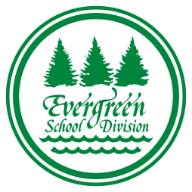Improving student outcomes in mathematics (number) 2013-2016
For the past four years Dr. George Johnson School has been engaged in an action research project to improve student outcomes in mathematics, specifically in the curriculum strand Number. The project began on the assumption that number outcomes are the gateway to overall improvement and achievement in mathematics. In 2013, staff decided to move the school’s primary focus area from reading to mathematics. Utilizing additional staffing to generate support for teacher meetings, professional learning communities were created at each grade level. Over the course of three years the funding was used to support approximately 6 meetings a year for each group. The groups focused their work / discussions on three essential questions:
- What do students need to learn?
- How will we know they learned it?
- What will we do if they don’t learn it?
Data
Four years of data gathering have shown the following:
- # Students meeting most outcomes (in number)
- 2013 - 50%
- 2014 - 64%
- 2015 - 70%
- 2016 (mid-year) - 71%
Learning Outcomes/Knowledge
In the book “Professional Capital” Hargreaves & Fullan talk about the power of highly effective groups of learners and the impact teachers can have on student outcomes if they work in collaborative teams. Highly effective teams, says Hargreaves & Fullan, will become reflective of their practice and eventually generate knowledge. The following is a list of what our teachers have learned about teaching number outcomes to students which eventually improved student outcomes as reported above.
- Organize and provide teams of teachers time in the school day to “work” the challenge (i.e. find solutions/create knowledge)
- Identify the “most” essential outcomes and have an intense focus on these in your instruction
- Spiral the instruction of these outcomes throughout the school year
- This leads to more time and intensity in instruction on the essentials
- Make use of a variety of groups for instruction (homogeneous as well as heterogeneous)
- Within the classroom
- Identify and teach key math vocabulary
- Focus on mental math skills
- teach problem solving strategies
- build proficient recall of multiplication facts
- Teacher’s develop common assessments at each grade
- Teacher analyze assessment data to track and understand student learning
- Build a system of interventions (RTI) to support students who are not learning proficiently
- Focus on the relevance of mathematical learning by making connections with real life experience (i.e. calculating sales tax for shopping)


